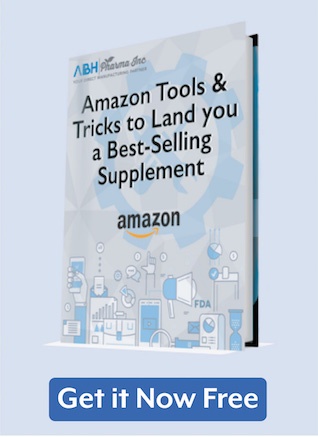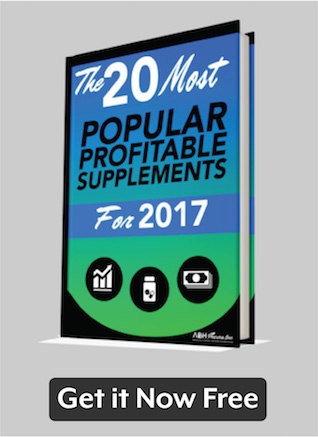As a supplement brand, it’s a good idea to stay up to date on the industry’s latest—and sometimes dangerous—options. USADA has issued a warning about ostarine, informing athletes about the selective androgen receptor modulator’s potential dangers. Currently, ostarine isn’t approved for human consumption—no SARM is, in fact—though several companies have “smuggled” the compound into their own product lines.
What is Ostarine?
Ostarine holds high interest in the medical community due to its apparent health benefits while not creating the negative side effects anabolic steroids are regularly associated with. SARMS target the body’s androgen receptors, promoting muscle growth. Effective at treating a variety of health conditions, SARMS might be utilized in medical treatments which counteract the effects of muscle wasting diseases, like hypogonadism, cancer and osteoporosis.
Currently, only a few products contain ostarine. These products are illegal, however, and they’ve slipped by the FDA’s notice. Because ostarine isn’t approved for human use, U.S. consumption or even international consumption, no legal medication can contain ostarine as an ingredient. Because ostarine isn’t permitted in dietary supplements, manufacturers who do utilize the SARM as an active ingredient market the products as either “research only” chemicals—or even “legal steroids.”
The USADA Ostarine Warning
The USADA warning, itself, warned athletes and fitness-lovers, alike, of ostarine’s possible dangers. “Sometimes, it’s on the label,” said USADA CEO, Travis Tygart. “Sometimes, it’s not.”
The July 25 USADA advisory reported a startling increase in supplement-SARM contamination. Since 2014, USADA has logged 13 doping cases involving either the use or possession of ostarine. SARMS are strictly prohibited in sports, and they’re also cause for some health concerns. Back in 2014, Biogenix USA LLC received an FDA warning about their supplement line which contained ostarine.
Unfortunately, SARMS are rather accessible. Due to the publicized clinical investigations surrounding ostarine as an anti-muscle-wasting compound, ostarine is available online for investigational—or research—use. Thus, it’s all too easy to purchase a SARM compound, include it within a supplement and market it to unsuspecting consumers.
Possible Legislative Solutions
In its current advisory, USADA warns against 36 sports supplements which exist its High-Risk list for containing ostarine. USADA is seemingly concerned about the ever-pressing matter of SARM inclusion in sports supplements. The law, of course, is a tool which might alleviate the problem. USADA has reportedly looked at legislative options, searching for a way to get SARMS off the market.
Meanwhile, other USADA efforts push to liken SARMS to anabolic steroids, summoning the Anabolic Steroid Control Act, itself, as a viable tool which can help sports organizations and the supplement industry alike. By engaging a similar process to address the issue of ostarine, and other SARMS, being illegally placed in supplements, USADA might further reduce the risk of dangerous compounds within the supplement world.
What This Means for Supplement Brands
Holding a supplement which has scrutinized ingredients isn’t a good gamble for supplement brandss. The popularity of SARMS has put a spotlight on the industry, and consumers, health advisors and those with litigative power, alike, are capable of identifying SARM-containing supplements.

The list of risks expands annually, spanning across consumer dangers, reduced inventories and wasted marketing campaigns. A single call-out of a SARM-inclusive supplement can greatly damage a brand, likening entirely separate product lines to shady marketing, botched nutritional standards and shady practices. In the best-case scenario, a brand offering potentially harmful supplements might receive scrutiny from the FDA, or even USADA. The worst-case scenario, however, paints a brand which has little to no regard for its consumers.
Keep in mind, however, that ostarine is still considered to be a research chemical. It’s possible SARMS in general may be legally allowed as prescribed substances, in the future. For now, however, it’s simply too early to tell. The full side effects of SARMS haven’t been fully characterized yet. You can view the full effects of ostarine at a 2013 study of ostarine provided by the National Center for Biotechnology Information.
The FDA doesn’t analyze the efficacy, safety or label accuracy of supplements before they’re sold to consumers. For this reason, consumers themselves are scrutinizing brand labels and product advertising campaigns. As a brand, it’s in your interest to offer a completely zero-risk supplement line, as anything less than a zero-risk line might risk your profits—or, worse, your brand’s legality.
Sources:
- www.usada.org/growing-evidence-ostarine-athlete-risk/
- www.fda.gov/ICECI/EnforcementActions/WarningLetters/2014/ucm434928.htm
- www.usada.org/growing-evidence-ostarine-athlete-risk/
- www.usada.org/substance-profile-ostarine/
- https://www.naturalproductsinsider.com/blogs/sports-nutrition/2017/07/usada-issues-ostarine-warning-to-sports-supplemen.aspx







